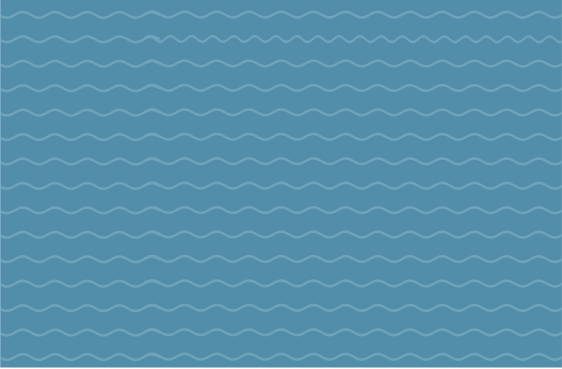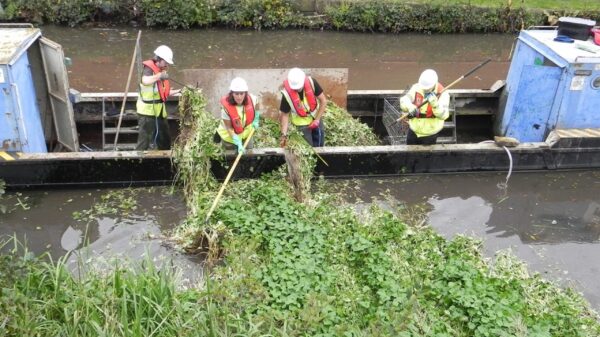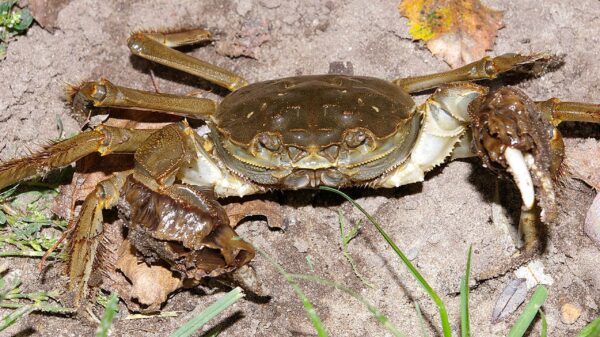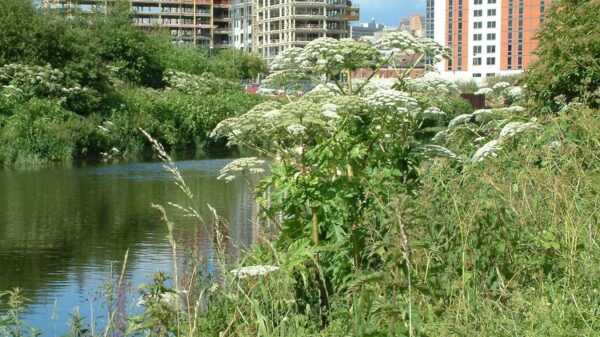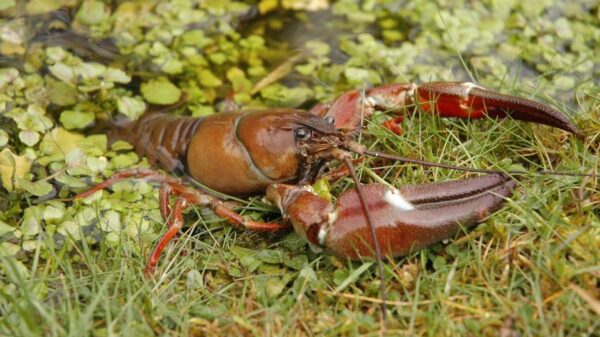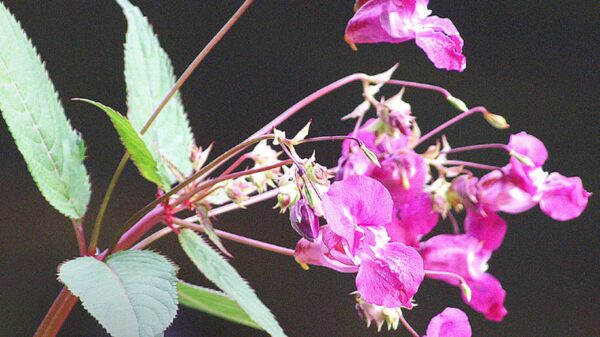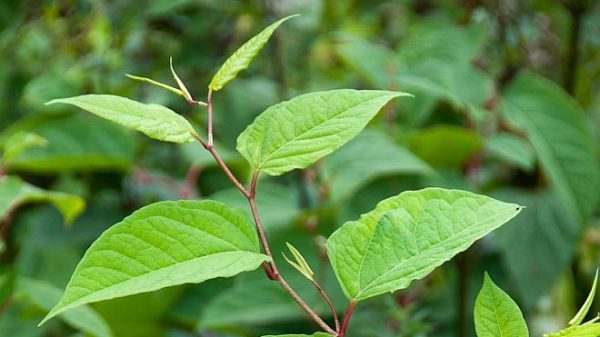Restoration Hub > Environmental Toolkit > Blue-Green Algae
What is Blue-Green Algae?
Blue-green algae are a number of different species of a type of bacteria (known as cyanobacteria) with the ability to use the sun’s energy to make food in the same way that many plants do. Under certain conditions blooms of algal growth can appear forming thick scums on the surface of the water of slow flowing water courses and standing water.
They are natural inhabitants of many inland waters, estuaries and the sea. In most cases are not regarded invasive species but a species hazardous to human health In fresh waters, they are found in suspension and attached to rocks and other surfaces at the bottom of shallow waterbodies and along the edges of lakes, rivers and canals.
In natural quantities they make a big contribution to the natural biology of the waterway. It’s only when there is an over-abundance of nutrients (nitrates and phosphates), a prolonged hot weather or when waters have been polluted by agricultural, domestic or industrial discharges that the algae multiplies rapidly, creating algal blooms covering the water surface.
Why is it a Problem?
Effects on Humans and Animals
These are of concern to waterways users as one quarter of algal blooms are known to produce toxins. These toxins can result in illness in humans but have been known to kill cows, sheep and dogs that have been drinking from the water’s edge. People face a health risk from exposure to blue-green algae toxins. Illnesses including skin rashes, eye irritation, vomiting, diarrhoea, fever and muscle and joint pain have occurred in people who’ve swallowed or swam through algal scum. These haven’t led to long-term effects or death but, in some cases, the illnesses can be severe.
Environment
When the blooms decay they use up the oxygen in the water and can lead to the death of aquatic organisms and a decline in biodiversity. There is also a loss of intrinsic value and can negatively impact on the appearance, quality and use of the water.
Identifying Blue-Green Algae
Blue green algae contain single-celled species as well as cells arranged in filaments and colonies. It is extremely difficult to make out the individual filaments, colonies and cells they usually form into clumps. These clumps can be easily seen and will often look like brown dots, greenish bundles or brown or green flakes.
In fresh waters, they’re suspended within the water or attached to rocks and other surfaces. It’s only when they rapidly increase and form an algal bloom that they are more apparent, to such an extent that they can discolour the water appearing as a variety of greens, blues and sometimes browns. Sometimes a scum may form on the surface, usually at the water’s edge.
Removal and Control of Blue-Green Algae
Control
Removal methods are difficult and with varying levels of success. Mechanical removal is costly and time consuming and using herbicides is contrary to good environmental practice.
Preventative methods are more successful in reducing and recording levels of pollution within a waterway.
The use of barley straw bales is widespread. When barley straw is put into water, its cellular structure starts to break down or decompose, slowly releasing chemicals which inhibit the growth of algae. Barley straw should be placed in early spring and replaced approximately every four to six months or sooner if the straw fully decomposes before that time. There are several commercial water treatment options to reduce blue-green algae including the use of ultrasound, aerators, and mechanic removal.
Reporting
Report the occurrence to the local council Environmental Health department. They should then place suitable warning signs around the affected area to warn local residents and visitors.
Environment Agency have an incident hotline on 0800 807060 where incidents of blue-green algal blooms can be reported. They also have an information leaflet on blue-green algae.
Our use of cookies
We use necessary cookies to make our site work. We'd also like to set optional analytics cookies to help us improve it. For more detailed information about the cookies we use, see our 'Cookie Policy page'.Edit preferences Accept
Privacy Overview
| Cookie | Duration | Description |
|---|---|---|
| __stripe_mid | 1 year | Stripe sets this cookie to process payments. |
| __stripe_sid | 30 minutes | Stripe sets this cookie to process payments. |
| cookielawinfo-checkbox-advertisement | 1 year | Set by the GDPR Cookie Consent plugin, this cookie records the user consent for the cookies in the "Advertisement" category. |
| cookielawinfo-checkbox-analytics | 1 year | Set by the GDPR Cookie Consent plugin, this cookie records the user consent for the cookies in the "Analytics" category. |
| cookielawinfo-checkbox-functional | 1 year | The GDPR Cookie Consent plugin sets the cookie to record the user consent for the cookies in the category "Functional". |
| cookielawinfo-checkbox-necessary | 1 year | Set by the GDPR Cookie Consent plugin, this cookie records the user consent for the cookies in the "Necessary" category. |
| cookielawinfo-checkbox-others | 1 year | Set by the GDPR Cookie Consent plugin, this cookie stores user consent for cookies in the category "Others". |
| cookielawinfo-checkbox-performance | 1 year | Set by the GDPR Cookie Consent plugin, this cookie stores the user consent for cookies in the category "Performance". |
| CookieLawInfoConsent | 1 year | CookieYes sets this cookie to record the default button state of the corresponding category and the status of CCPA. It works only in coordination with the primary cookie. |
| PHPSESSID | session | This cookie is native to PHP applications. The cookie stores and identifies a user's unique session ID to manage user sessions on the website. The cookie is a session cookie and will be deleted when all the browser windows are closed. |
| Cookie | Duration | Description |
|---|---|---|
| _fbp | 3 months | Facebook sets this cookie to display advertisements when either on Facebook or on a digital platform powered by Facebook advertising after visiting the website. |
| _ga | 1 year 1 month 4 days | Google Analytics sets this cookie to calculate visitor, session and campaign data and track site usage for the site's analytics report. The cookie stores information anonymously and assigns a randomly generated number to recognise unique visitors. |
| _ga_* | 1 year 1 month 4 days | Google Analytics sets this cookie to store and count page views. |
| _gat_gtag_UA_* | 1 minute | Google Analytics sets this cookie to store a unique user ID. |
| _gat_UA-* | 1 minute | Google Analytics sets this cookie for user behaviour tracking.n |
| _gid | 1 day | Google Analytics sets this cookie to store information on how visitors use a website while also creating an analytics report of the website's performance. Some of the collected data includes the number of visitors, their source, and the pages they visit anonymously. |
| CONSENT | 2 years | YouTube sets this cookie via embedded YouTube videos and registers anonymous statistical data. |
| Cookie | Duration | Description |
|---|---|---|
| test_cookie | 15 minutes | doubleclick.net sets this cookie to determine if the user's browser supports cookies. |
| VISITOR_INFO1_LIVE | 5 months 27 days | YouTube sets this cookie to measure bandwidth, determining whether the user gets the new or old player interface. |
| YSC | session | Youtube sets this cookie to track the views of embedded videos on Youtube pages. |
| yt-remote-connected-devices | never | YouTube sets this cookie to store the user's video preferences using embedded YouTube videos. |
| yt-remote-device-id | never | YouTube sets this cookie to store the user's video preferences using embedded YouTube videos. |
| yt.innertube::nextId | never | YouTube sets this cookie to register a unique ID to store data on what videos from YouTube the user has seen. |
| yt.innertube::requests | never | YouTube sets this cookie to register a unique ID to store data on what videos from YouTube the user has seen. |

